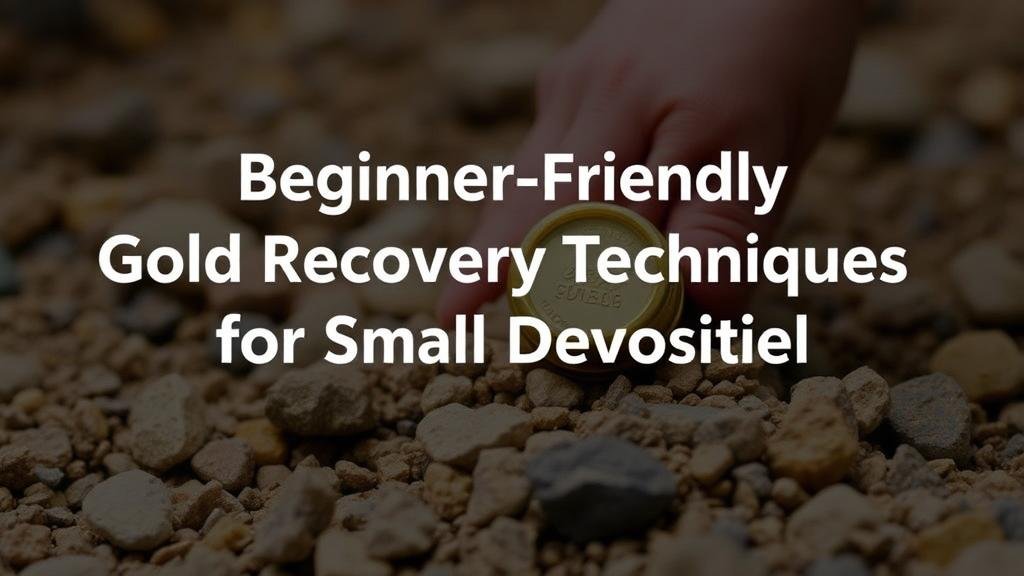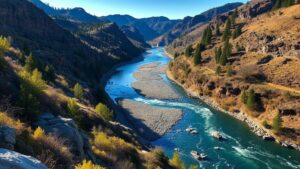Beginner-Friendly Gold Recovery Techniques for Small Gravel Deposits
Beginner-Friendly Gold Recovery Techniques for Small Gravel Deposits
Gold recovery from small gravel deposits is an accessible entry point for amateur prospectors and hobbyists alike. The allure of gold, coupled with the simplicity of small-scale mining, makes it an enticing venture. This article will explore several beginner-friendly techniques for recovering gold from gravel deposits, providing practical tips and insights for novice prospectors.
Understanding Gold Occurrence in Gravel Deposits
Gold often occurs in alluvial deposits, which are created by the erosion of gold-bearing rocks and transported by water. Gravel beds in rivers and streams can accumulate these particles over time. Understanding where to look and how to extract the gold is crucial for novice miners.
- Gold is denser than most other materials found in gravel, allowing it to settle in lower areas of the streambed.
- Look for locations where water slows down, such as bends, behind rocks, or in pools, as these areas tend to trap heavier materials like gold.
Essential Tools for Gold Recovery
Several simple tools are critical for successfully recovering gold from gravel deposits:
- Panning Kit: A gold pan is crucial for separating gold from other materials. Look for a pan with riffles to help capture fine particles.
- Sluice Box: A sluice box helps in processing larger quantities of gravel. Water flows through the box, allowing gold to settle behind the riffles.
- Classifiers: These are mesh screens that help break down gravel into various sizes, making it easier to pan or sluice.
Basic Gold Panning Techniques
Panning is one of the simplest and most effective methods for beginner prospectors. Here’s how to do it:
- Fill the Pan: Fill your gold pan with gravel from the streambed.
- Add Water: Add water to the pan, allowing it to cover the gravel.
- Shake and Swirl: Shake the pan side to side to settle the heavier materials.
- Remove Lighter Material: Gradually tilt the pan to allow lighter materials to wash away while keeping the heavier particles.
- Inspect for Gold: Continue this process until only the heaviest materials remain. Look for shiny, yellow pieces, indicating the presence of gold.
Using a Sluice Box for Increased Efficiency
A sluice box can significantly increase the volume of material processed, making it ideal for larger deposits. Here is a straightforward approach to using a sluice box:
- Setup: Place your sluice box in a location with a steady flow of water. Ensure the box is level and properly anchored.
- Feed the Gravel: Shovel gravel into the head of the sluice box, allowing water to carry the material through the riffles.
- Monitoring: Regularly check the riffles for trapped materials, and keep the sluice box clear of debris.
- Collect Concentrates: Periodically collect the material from the boxs end for further panning to separate any gold present.
Environmental Considerations and Best Practices
As a responsible prospector, it is crucial to consider the environmental impact of your gold recovery activities. Here are some best practices:
- Work in the least disruptive manner possible to the environment.
- Adhere to local regulations regarding gold prospecting and restrictions on equipment usage.
- Practice leave-no-trace principles by cleaning up your work area after recovery activities.
Conclusion and Actionable Takeaways
Gold recovery from small gravel deposits can be a rewarding and educational experience for beginners. By using basic tools such as gold pans and sluice boxes, and following simple techniques, newcomers can successfully explore their local waterways for gold. Understanding the environment, employing responsible practices, and familiarizing oneself with the local geology will promote both success and sustainability in gold prospecting.
Start by researching local regulations, gathering the necessary equipment, and selecting a suitable location to begin your gold recovery journey. Happy prospecting!



